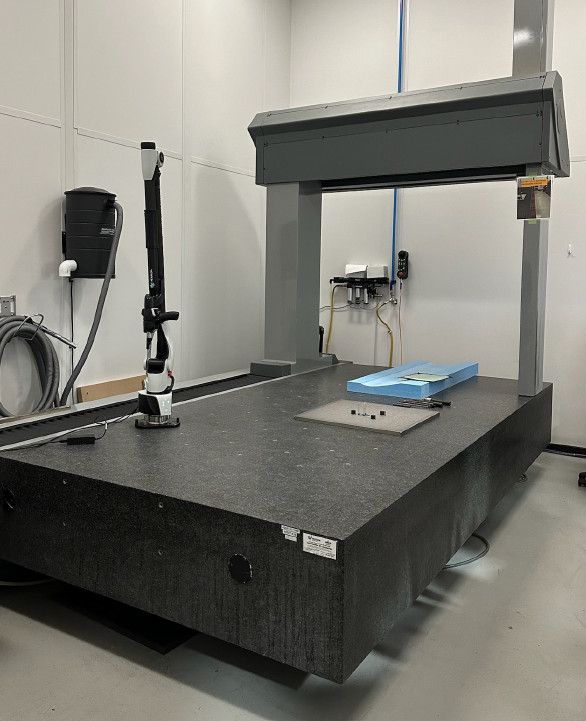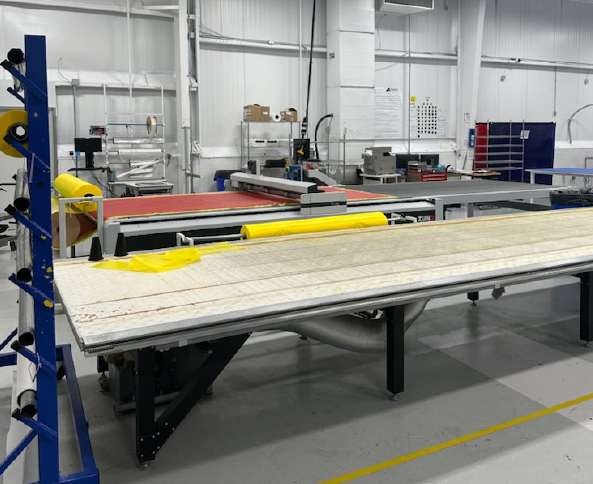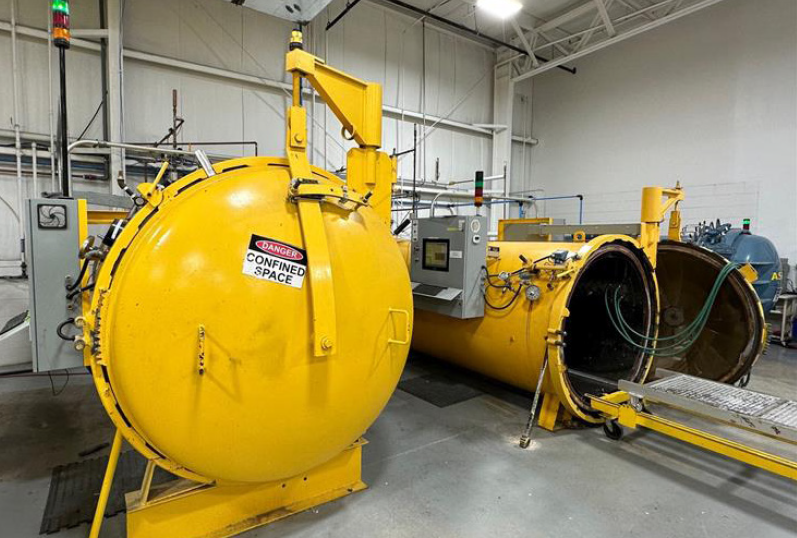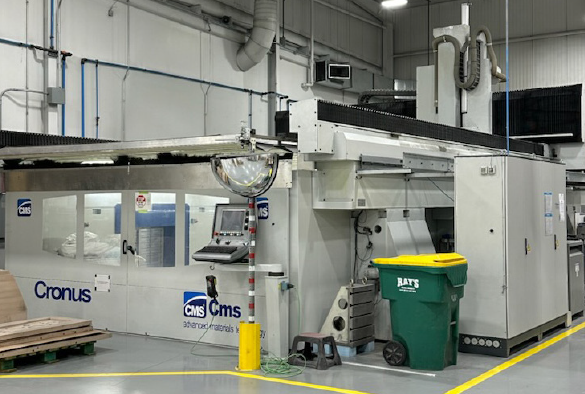LSI Case Study
Opcenter (Preactor) APS
Applied Composites - Opcenter Planning & Scheduling Case Study
Streamlining planning & scheduling processes to achieve on-time delivery on average 96-98% of the time
Applied Composites uses Opcenter APS to improve planning and scheduling processes, visibility, and decision-making
Applied Composites, founded in 1982, is a global leader in the composites industry, providing composite solutions for airframes, engines, defense and mission systems, launch vehicles and satellite structures. Overall, the company aims to strategically offer engineering services, programmatic support and vertically integrated manufacturing capabilities to customers in the aerospace and defense industries. Applied Composites has a long customer satisfaction history thanks to their focus on improving their processes to reduce time and costs.
However, as Applied Composites grew, they noticed issues regarding planning, scheduling and their overall processes. As a solution, the company consulted with ATS Lean Scheduling International (LSI), part of ATS Global (ATS), a Siemens Digital Industries Software partner. This led to the company leveraging Opcenter™ software as a solution, which is part of the Siemens Xcelerator business platform of software, hardware and services.
Keeping up with business challenges
Although business growth sounds like an overall win-win situation, there are challenges that come with it. Applied Composites realized that it was becoming more difficult to manage planning, scheduling and overall processes, especially when the company’s growth was affecting all areas. As the customer base grew, the amount of work grew, causing the need for more employees. With these compounding issues, the plant’s work environment also suffered, creating stress for workers to understand where products were and causing orders to go missing. Additionally, not knowing what materials they would need for certain jobs or not being able to schedule enough employees to run available machines was causing the company to fall behind.
During this period, Applied Composites was using spreadsheets and enterprise resource planning (ERP) software to create a detailed production report listing all customer jobs and ship-by dates. The ERP software would set the material dates using its built-in materials requirement planning (MRP) function; however, this system had flaws. It did not consider tooling as a constraint, which is crucial for accurately scheduling downstream operations in the manufacturing process. Due to this, Michael Moses, the master scheduler at Applied Composites, would have to schedule 6 to 8 weeks out after receiving the MRP process report.

“Using Opcenter APS ties it all together, giving us an opportunity to be upfront with our customers and to help identify what’s going to contribute the most success to the program.” – Michael Moses, Master Scheduler

Additionally, John Pettit, the operations manager at Applied Composites, describes the challenges of the supervisor’s role in the first operational step (laminating). First, they would have to look at the daily report. Then piece together how to manage the shop floor for the day. This includes figuring out what the delivery dates were, knowing that they had to have everything in their department at least four weeks before the due date and giving other departments a week to finish. Overall, the process was not optimal and left room for error.
Applied Composites knew they needed to find a way to overcome these issues, especially when it came to scheduling and planning. “Overall, we wanted to have a clear indication of what we could be delivering on,” says Moses.
Teaming up to find a solution
To find a solution, Applied Composites solicited help from LSI. At first, the company struggled with adapting to a solution that had an alternative approach to scheduling versus their original ERP software, leading the first implementation to not be successful. However, once the company was confident in LSI’s suggestion of using Opcenter Advanced Planning and Scheduling (APS), they were able to successfully implement it.
Using mini-proofs of concept, LSI worked with Applied Composites to suggest and gather data for driving their schedule. Additionally, by having a hands-on approach for configuring models and validating data requirements, the companies were able to test various validation scenarios.
Applied Composites chose Opcenter APS as their scheduling and planning solution because of its capability to manage complex scheduling requirements with multiple constraints active throughout the manufacturing process. This was something the company’s previous ERP software could not do.
“By leveraging Opcenter APS, we can react to changes quicker.”
– Michael Moses, Master Scheduler
Overcoming planning and scheduling limitations
Before integrating Opcenter APS, Applied Composites experienced numerous limitations using their old solution. This included a lack of visibility for material availability, a reliance on the scheduler’s and shop floor supervisor’s tribal knowledge, a stressful and chaotic environment, exponential amounts of time spent on production scheduling and no solution to aid the scheduler in making decisions. However, thanks to Opcenter APS, they were able to overcome most of them.

To overcome these limitations, using Opcenter APS, Applied Composites was able to configure models to consider all constraints, from materials to tooling or molds to operator capabilities. From there, they could efficiently create a schedule according to the plant’s true capacity and not an estimate. With these configurations, the company could also improve their scheduling processes since the software could automatically make many of the scheduling decisions. Previously, the scheduler took hours to create a high-level report and then use it to create a schedule in a spreadsheet, leveraging knowledge and data from multiple sources.
As for visibility, using Opcenter APS, workers could see where the orders were in the plant, inform customers of actual lead times versus standard lead times and see if there were any potential issues downstream. Further, the ability to set accurate material demand dates and schedules was groundbreaking for the company. Now they could schedule over 30,000 operations quickly and easily, saving time and manual effort.
Previously, department supervisors handled scheduling and processed downstream operations simultaneously, causing them to miss opportunities to maximize throughput and reduce changeover times. Additionally, Applied Composites considered assigning three schedulers to manage the plant’s activities; however, with Opcenter APS, they required one master scheduler, lowering the need for more workers for a specific task.
By using this solution, Applied Composites can generate an easy-to-follow schedule, helping them limit the decision-making happening on the shop floor and reducing stress and disorganization.
Benefiting from Opcenter Production Scheduling

Once Applied Composites fully integrated Opcenter APS, they pushed the software’s capabilities to the max, using nearly every out-of-the-box (OOTB) feature without customizations, reducing scheduling time from hours to minutes. Using this solution provided the company with an accurate schedule that respects tooling and machine constraints, labor and materials while maximizing set up time, prioritizing delivery dates and allowing them to flag priority customers. They can also stay on top of any issues or delays that may arise, allowing the company to immediately notify the customer and inform them of the recovery date.
“Using Opcenter APS ties it all together, giving us an opportunity to be upfront with our customers and to help identify what’s going to contribute the most success to the program,” says Moses.
Thanks to the constraint capabilities, Applied Composites can now streamline their tooling and labor processes. For tooling constraints, the company had unique challenges concerning molds, which multiple operations used. Once a mold was in use for one operation, it was used for multiple stages until the system released it later during a downstream process. This means that technicians cannot schedule that mold again until it is released. To overcome this challenge, the solution needed to commit those molds to each consecutive operation that required them, track their use and not allow another operation to schedule them until they were available.
“With Opcenter APS, we can accomplish everything from capacity planning to giving the shop floor technicians a visual board of what they need to work on in order, that also allows them to see their monthly on-time delivery stats.”
– Michael Moses, Master Scheduler
As for labor constraints, the company used these at the department level; however, only certain operators had the specific resource skills or capabilities to use them. Using Opcenter APS, Applied Composites can now see the plant’s capacity, how many additional people they need to hire or if there is a tool constraint issue.
“How many plants have full scheduling software that can do almost everything?” says Moses. “With Opcenter APS, we can accomplish everything from capacity planning to giving the shop floor technicians a visual board of what they need to work on in order that also allows them to see their monthly on-time delivery stats.”
Another major benefit of this solution was achieving on-time delivery on average 96 to 98 percent of the time. “By leveraging Opcenter APS, we can react to changes quicker,” says Moses. Since the company could react quicker, technicians could solve issues as soon as they received notification. “Using Opcenter, we haven’t dipped below 96 percent for on-time delivery except maybe one or two times during the COVID supply shortage,” says Moses.
By implementing a data-driven solution like Opcenter APS, Applied Composites needs to keep its data accurate. This not only ensures that the solution continues to work but also helps the company standardize its processes and prioritize correcting data inaccuracies, keeping the company streamlined. Additionally, Applied Composites has a solution that is flexible enough to grow with its business and has almost doubled the number of scheduled operations.
Intro to Opcenter Scheduling Features
Intro to Opcenter Secondary Constraints
Opcenter APS – Preferred Sequence Rule